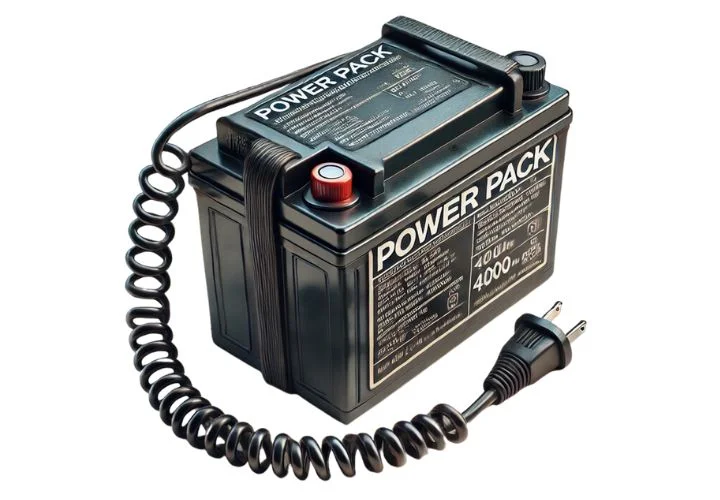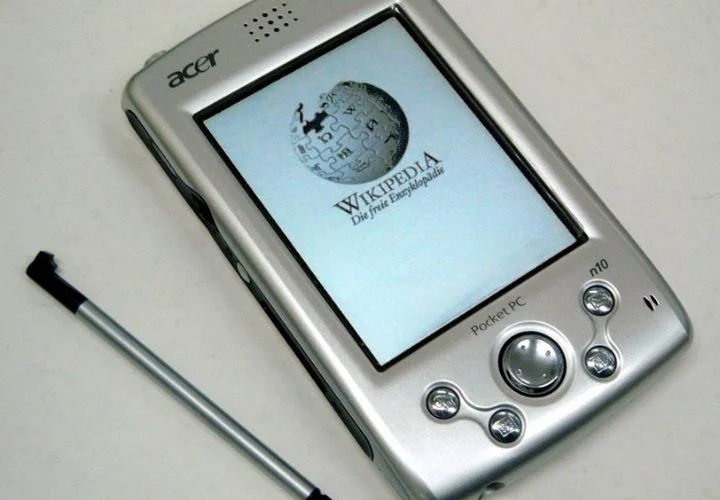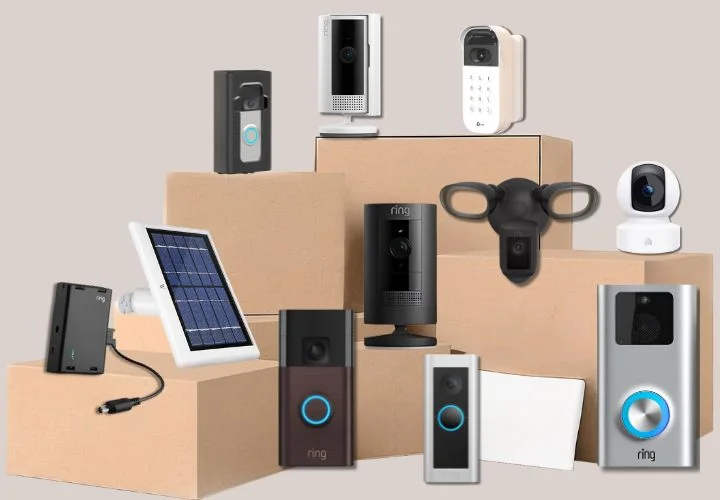7 Best Vintage Tech Gadgets You Can Still Use Today
Old tech never dies—it just finds new ways to make life simpler.
by Collectors Abode | Updated May 12, 2025
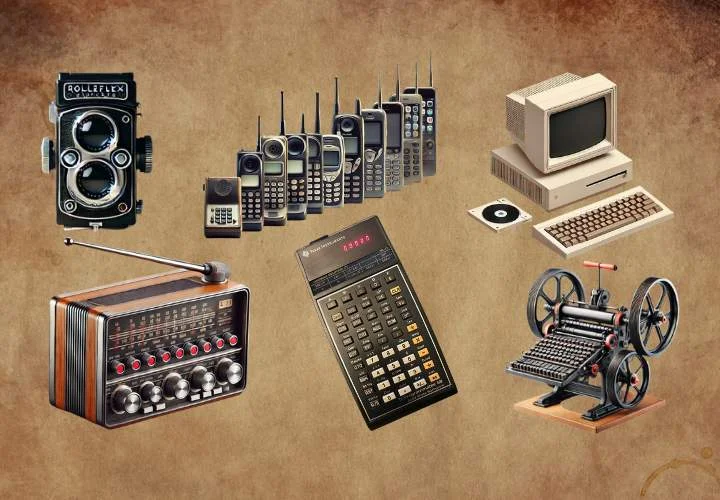
We, the Collectors Abode Team, independently review everything we recommend. If you buy anything through our links,
we may earn a commission. Learn more ›
Vintage tech carries a unique charm that’s hard to resist. With their robust designs and iconic features, these classic gadgets take us back to an era when technology began to weave into our daily lives. From the satisfying clack of a typewriter to the warm glow of an old television set, these devices aren’t just memories—they’re milestones in the innovation journey.
What makes vintage tech so captivating is how it reflects the ingenuity of its time. These classic gadgets weren’t just functional; they were groundbreaking, setting the stage for today’s technology and pushing the boundaries of what gadgets could do.
They still hold value as collectibles and as working pieces of history. In this article, we have reviewed some of the best vintage tech gadgets that continue to prove their worth today.
1. Classic Calculators

Before smartphones and computers became our go-to devices for calculations, classic calculators were the unsung heroes of everyday problem-solving. From solving basic arithmetic to complex equations, these iconic gadgets changed the way we approach numbers.
Key Innovations in Calculator Technology
Over the years, calculators didn’t just stay stuck in the past—they evolved and became impressive. Here are some of the most remarkable milestones that took calculators from simple tools to the powerful gadgets we know today:
1. Early Abacus
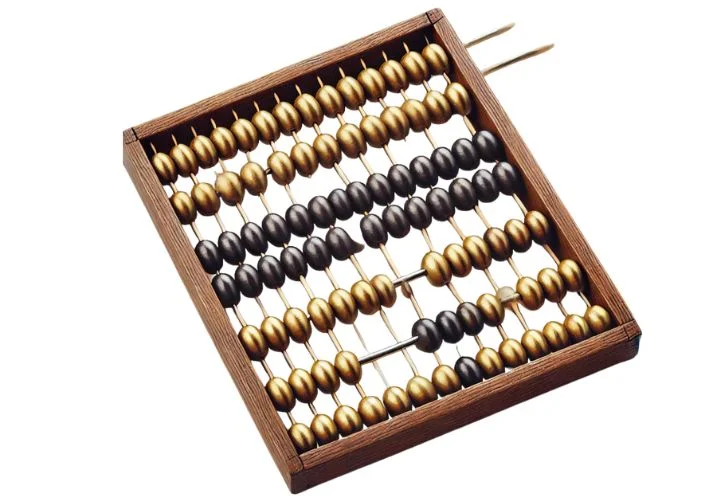
Let’s take a quick trip back to the earliest days of calculators. It all started with the abacus—a simple yet brilliant tool that helped people with basic math long before we had modern devices. Imagine sliding those beads back and forth to add and subtract; it was a game-changer in its day!
But as time marched on, so did the evolution of these tools. Mechanical calculators began to emerge, clunky by today’s standards but revolutionary in making complex calculations more manageable.
Remember when calculators first went electronic? These early models swapped gears and levers for circuits, making them faster, smaller, and more reliable. No more cranking; just a simple press of a button and voilà!
The idea of using solar power came. Suddenly, calculators could work without batteries, thanks to sunlight. It was eco-friendly before, and being eco-friendly was cool.

If you’ve ever plotted a graph or solved a tricky equation in school, you know the power of graphing calculators. They were a lifesaver for students tackling higher math and are still used in classrooms today.

These calculators let you do more than just crunch numbers. You could program them to run custom calculations—a massive leap for anyone needing more than essential math functions.
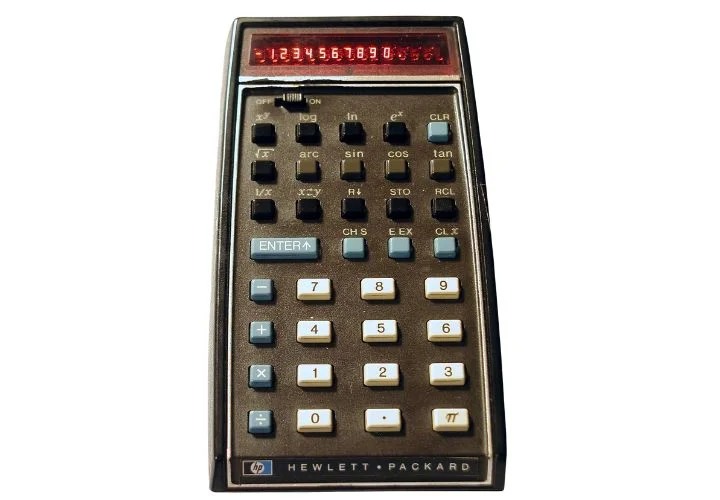
Finally, calculators got personal. With pocket calculators, you could carry this little powerhouse in your bag or pocket, ready to help whenever needed.
2. Vintage Cameras
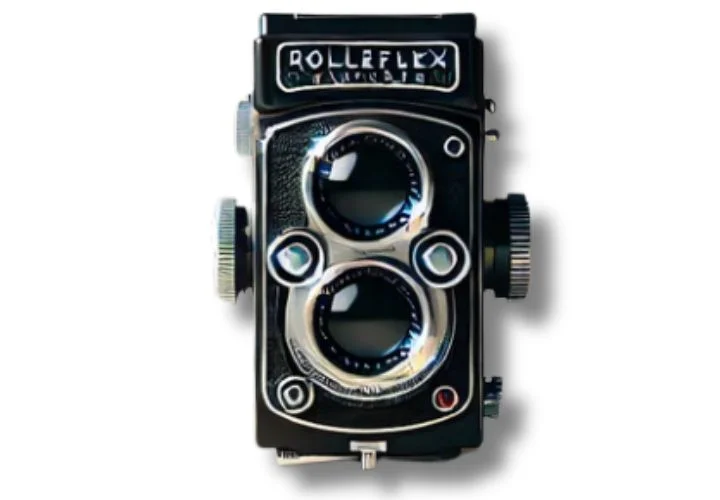
Cameras have a special place in our hearts, don’t they? They’ve been with us through some of our most cherished moments, capturing memories that would otherwise fade. Let’s walk through the history of these incredible devices and see how they’ve evolved over the years.
Iconic Camera Models Through the Decades
Specific cameras have stood out over the years, becoming icons in their own right. Here are a few that made a significant impact:
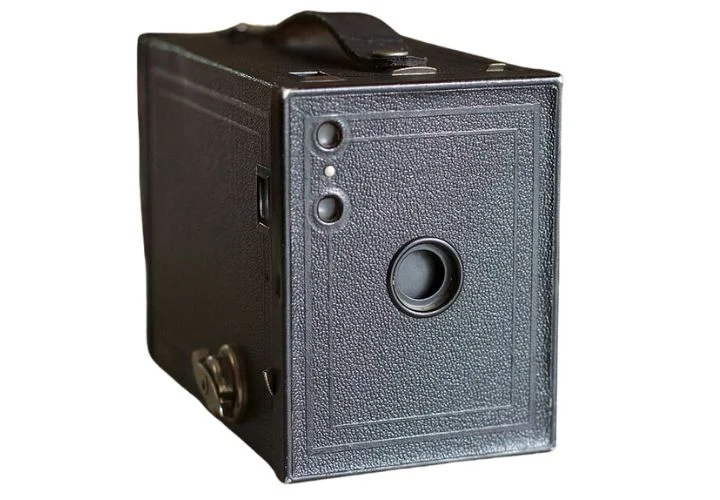
This little box camera was a game-changer, bringing photography to the masses. Simple, affordable, and easy to use, it allowed millions of people to start capturing their memories.
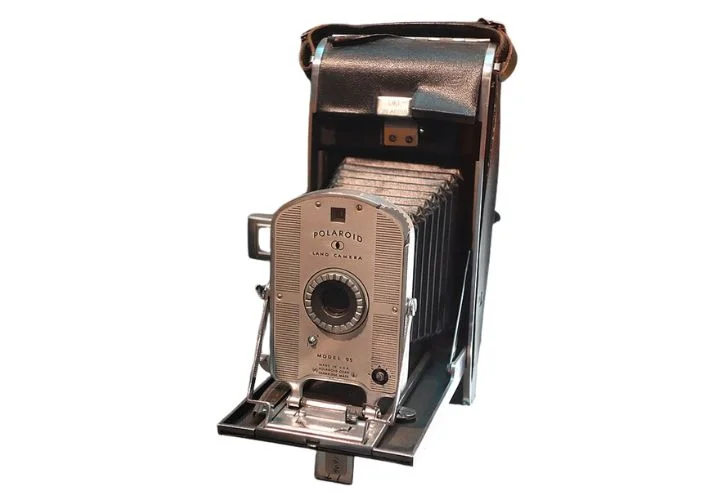
Who can resist the instant satisfaction of a Polaroid? The Model 95 brought instant photography to life, allowing people to capture a moment and see it develop right before their eyes. It truly felt like magic!
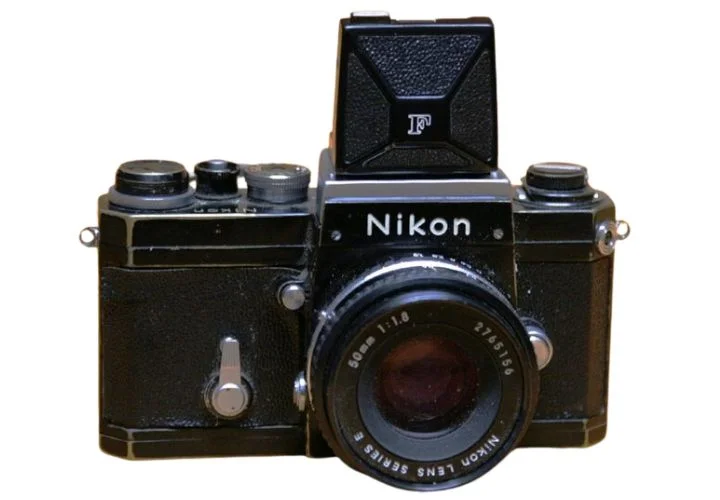
via Wikimedia Commons
This camera set the standard for professional photography. Its interchangeable lenses and rugged design made it the go-to camera for photojournalists worldwide.
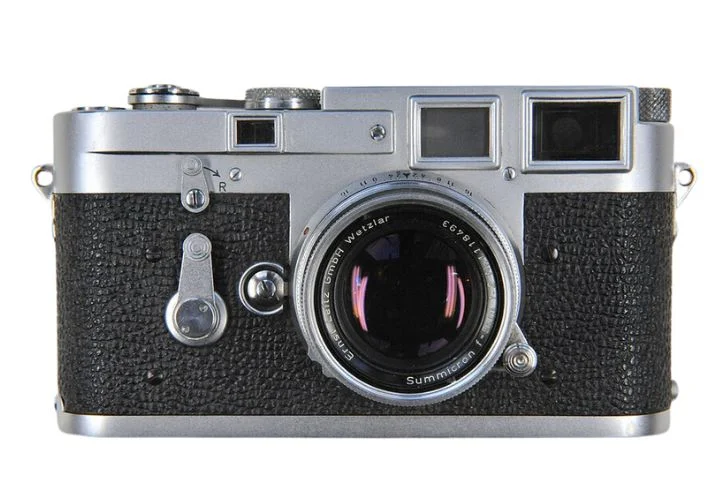
Renowned for its precision and quality, the Leica M3 became a favorite among photographers who valued craftsmanship and optical excellence. It’s still a coveted piece for collectors today.

The AE-1 brought advanced features like auto-exposure to the masses, making high-quality photography more accessible to everyone. It’s no wonder it became one of the best-selling cameras ever.
Today, while digital photography is more convenient, many photographers still cherish their old film cameras. There’s a certain magic to the analog process—a connection to the past that inspires creativity and artistry in a digital world.
3. Early Cell Phones
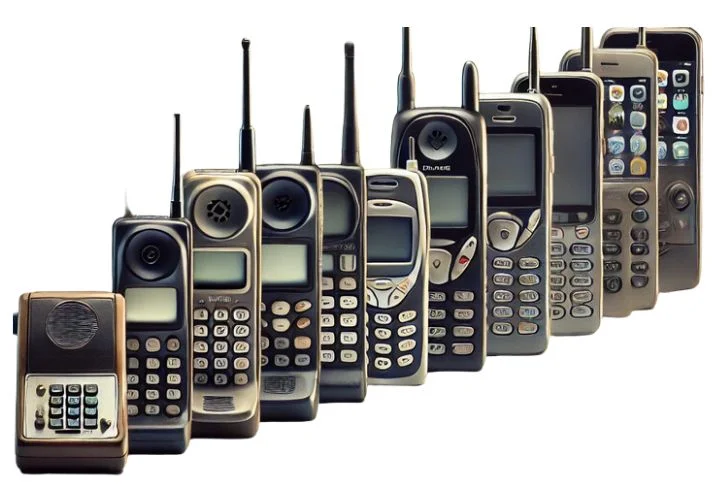
It’s hard to imagine a world without cell phones, isn’t it? But there was a time when these devices were brand new, and their introduction changed everything. Let’s look at how early mobile phones evolved and their incredible impact on our lives.
Iconic Vintage Cell Phones Through the Decades
Some vintage cell phones have become icons in their own right, leaving a lasting legacy in mobile technology. Here are a few that made their mark:
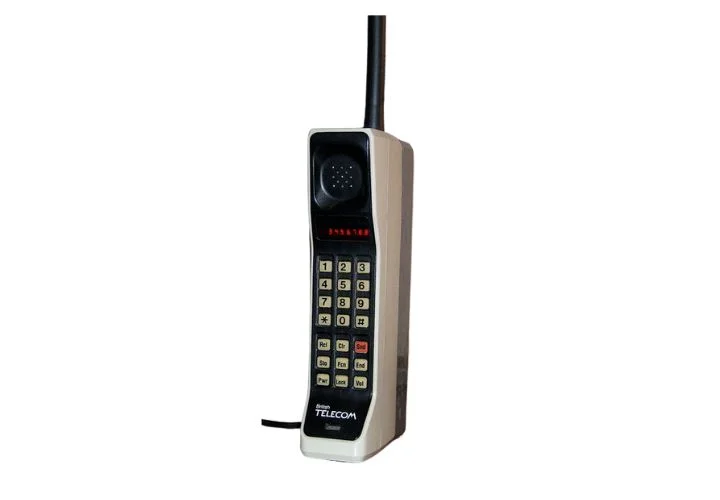
The original “brick” phone was the first commercially available mobile phone with a valid status symbol.
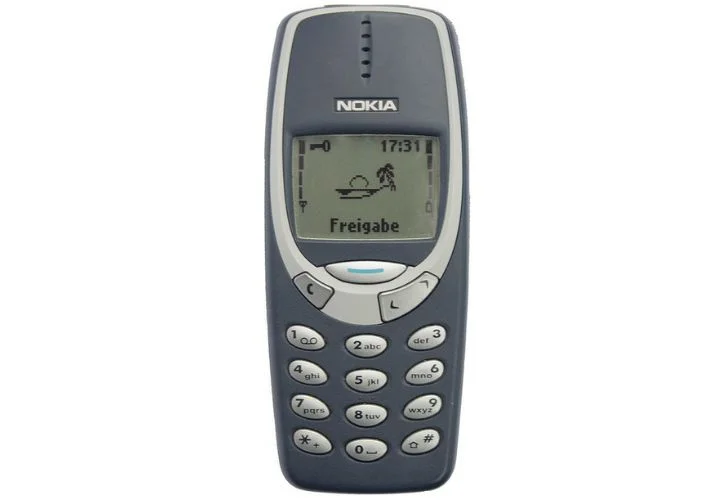
via Wikimedia Commons
Known for its durability and long battery life, the Nokia 3310 became one of the best-selling phones ever.

via Wikimedia Commons
The first popular flip phone was a must-have for anyone who wanted a stylish, compact phone.
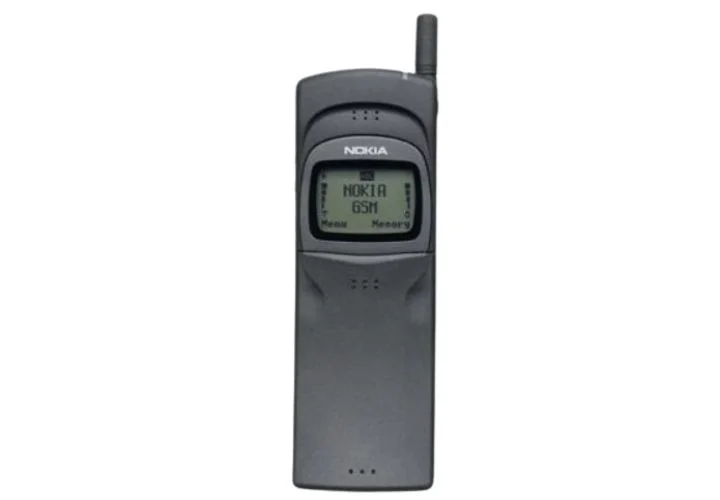
Dubbed the “banana phone” for its curved shape, it gained fame from its appearance in the movie The Matrix.
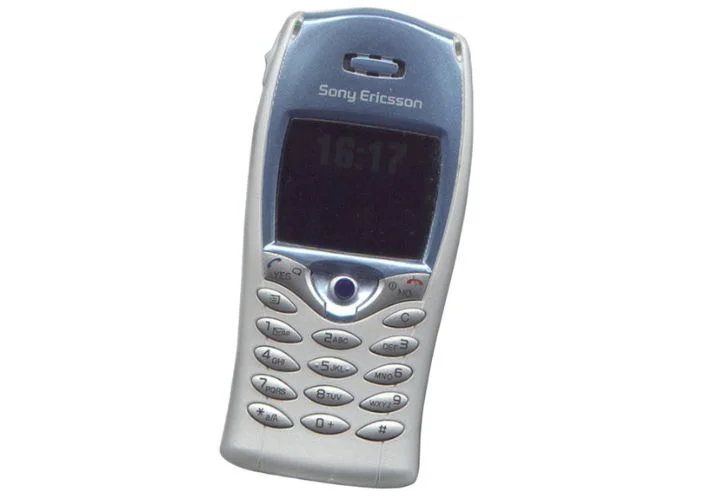
One of the first phones with a color screen and Bluetooth, it marked the beginning of the multimedia phone era.
Looking back, it’s clear that the early days of mobile phones set the stage for the hyper-connected world we live in today. They changed how we communicate and left a lasting mark on our culture and interactions with the world around us.
4. Personal Computers
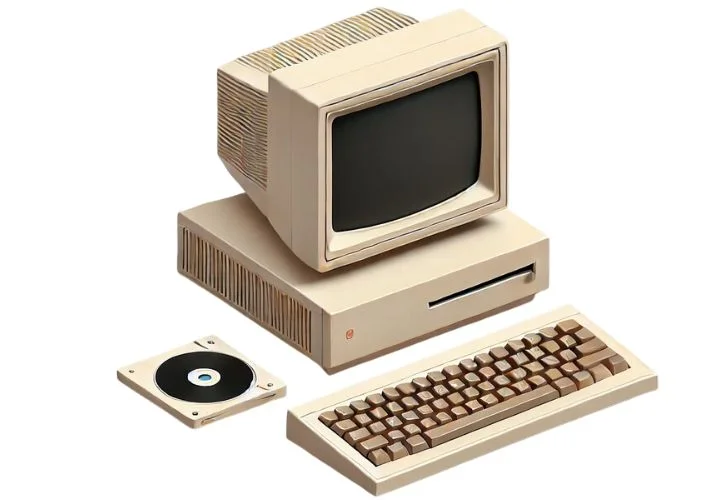
Personal computers have come a long way from their massive, room-filling ancestors. What started as significant, complex machines used primarily by governments and large institutions gradually transformed into the compact, powerful devices we rely on daily.
The evolution from the early days of computing to personal computers becoming household staples is a remarkable tale of innovation and technological advancement.
Early Computers: From ENIAC to Personal PCs
As technology progressed, these massive machines gradually became smaller and more powerful. By the 1970s, we saw the first inklings of the personal computer.
The shift from large, centralized computers to smaller, more accessible machines opened up a world of possibilities, laying the foundation for the PCs that would soon revolutionize the world.
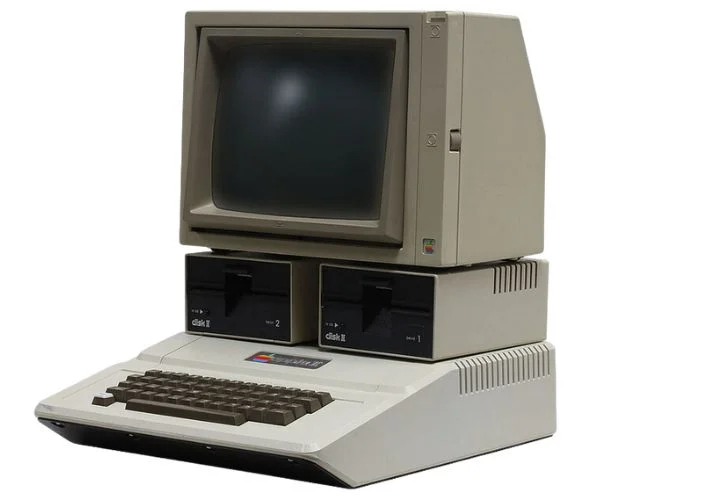
The Apple II was one of the first personal computers to achieve widespread success, making computing accessible to the general public. Its popularity was crucial in establishing Apple as a significant force in the tech industry.
2. Commodore 64
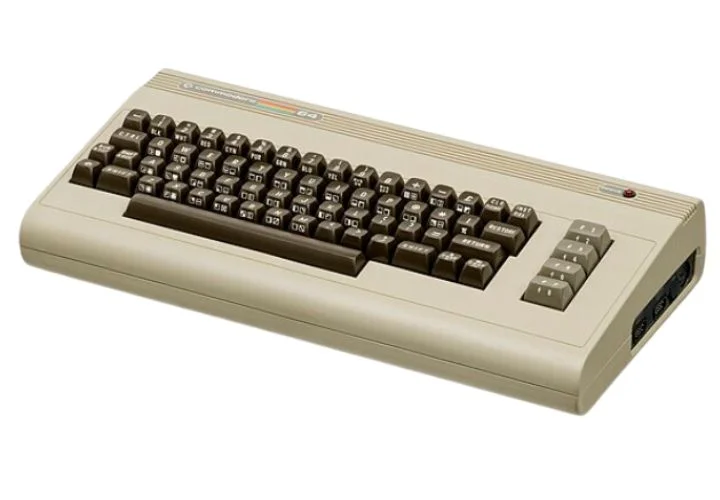
Known for its affordability and versatility, the Commodore 64 became the best-selling computer model of all time. Thanks to its extensive software library and ease of use, it was beloved by gamers and hobbyists alike.

IBM’s entry into the personal computer market set the standard for what a PC should be. Its open architecture allowed third-party developers to create software and peripherals, leading to the widespread adoption of the PC platform.
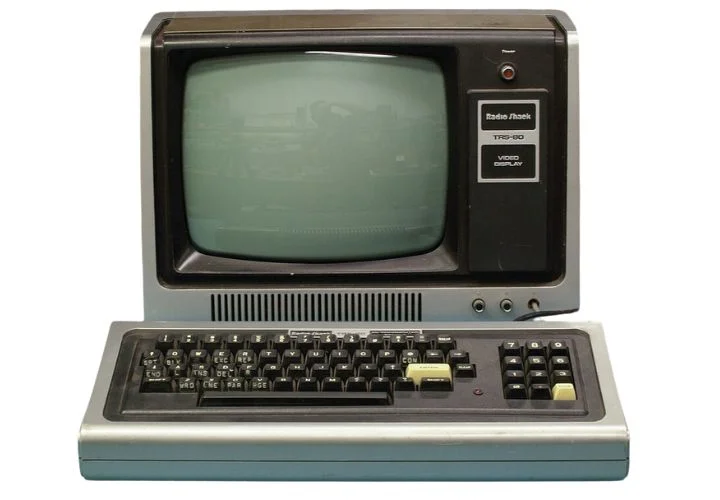
Often referred to as the “Trash-80,” this model was one of the first mass-produced personal computers and was a hit in schools and homes for its affordability and accessibility.
The user-friendly interfaces developed for these early machines also set the standard for how we interact with computers now. From the graphical user interface of the Apple Lisa to the command-line interface of MS-DOS, these early systems taught us how to communicate with our machines.
In a way, the legacy of vintage computers is all around us. They were the first step in a journey that has led to the powerful, sleek devices we use today. And for many of us, they hold a special place in our hearts as the machines that sparked our love for technology.
5. Classic Printers
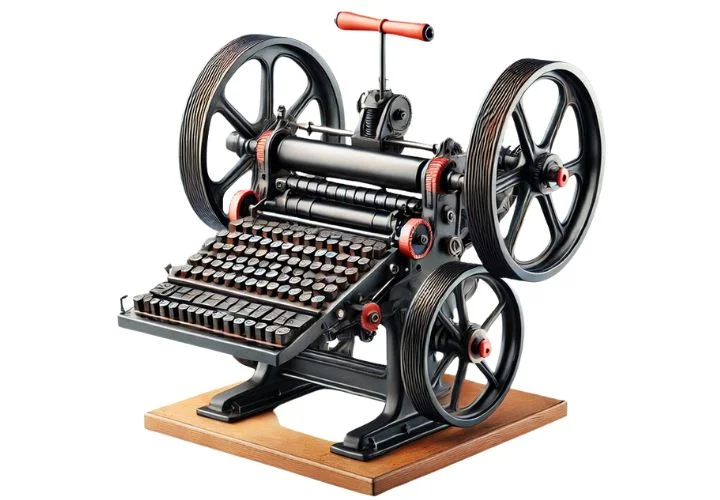
Printers might not be the flashiest piece of technology, but they’ve played a crucial role in shaping the modern office. Printers have been at the heart of office work for decades, from the clunky dot matrix models of the past to the sleek and efficient machines we use today.
The journey of printers began with the early dot matrix models, which were the workhorses of many offices in the 1970s and 80s. These printers used a print head that moved back and forth, striking an ink-soaked ribbon against paper to create text and images.
While they were reliable, they were also noisy and slow, and the output often looked more like a series of dots than crisp, clear text.
Printers also played a vital role in the shift toward paperless environments. As digital technology advanced, the need for physical documents decreased, but printers adapted by offering scanning and copying functions. This evolution helped offices transition to managing documents electronically, reducing paper waste while maintaining the ability to print when needed.
Mentionable Classic Printers
Some printers have become iconic over the years, not just for their functionality but also as collectible items for enthusiasts:

via Wikimedia Commons
This dot matrix printer was popular among early Apple users. It was known for its reliability and compatibility with Apple’s early computers.
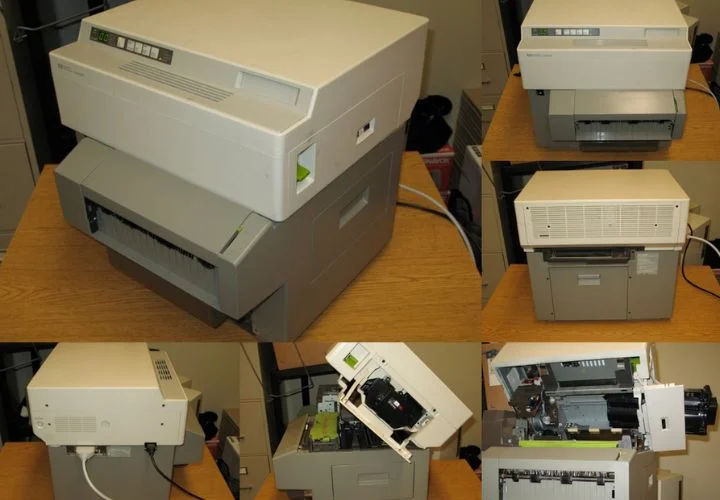
via Wikimedia Commons
This was the first desktop laser printer. It set the standard for office printing with its speed and print quality, making it a staple in offices worldwide.
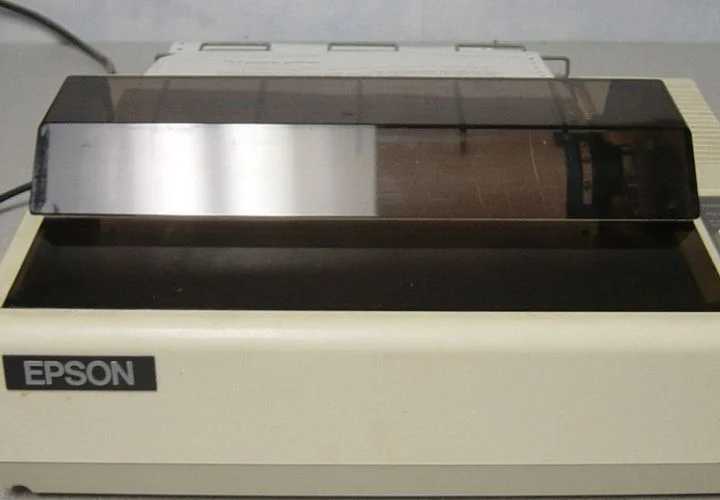
via Wikimedia Commons
This trendy dot matrix printer was known for its durability and versatility. It was often used with early personal computers.
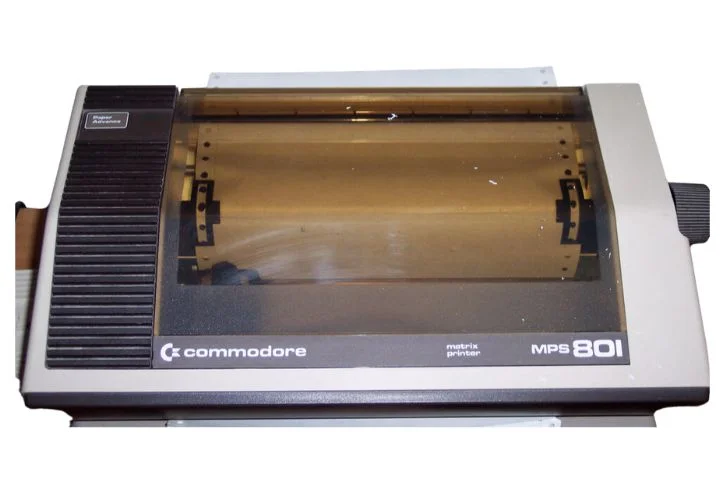
This is a dot matrix printer commonly used with the Commodore 64, valued by collectors for connecting to one of the best-selling computers ever.
These classic printers are more than just relics; they represent milestones in the history of office technology. Today, they’re sought after by collectors who appreciate their historical significance and their role in the evolution of printing.
6. Vintage Scanners
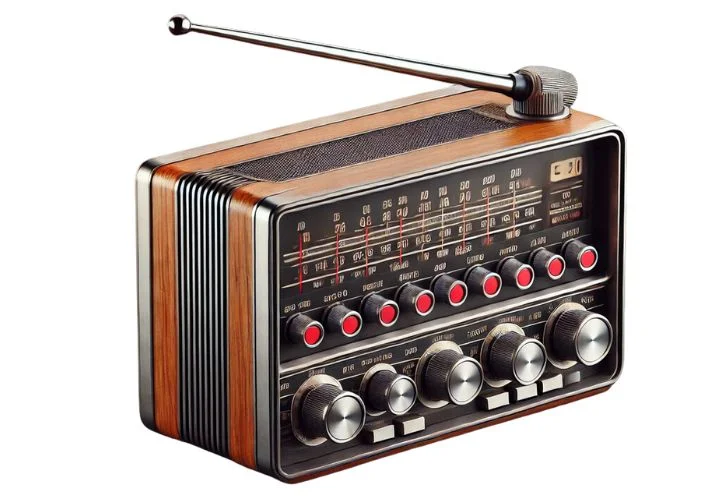
Scanners might not always get the spotlight, but their role in bridging the gap between the physical and digital worlds has been nothing short of transformative.
The story of scanning technology began with the development of early scanners, which were designed to digitize physical documents and images. The first type of scanner that gained popularity was the flatbed scanner.
These devices operated like photocopiers: you placed a document or photo on the glass bed, and the scanner moved a light and sensor across it to capture the image. The result was a digital file that could be stored, edited, and shared electronically.
Around the same time, handheld scanners also started to emerge. These portable devices allowed users to scan text and images by manually moving the scanner across the document. While they required a steady hand, handheld scanners were a game-changer for portability, making it possible to digitize information on the go.
Iconic Scanners of All Time
Here are a few scanners that left a significant mark in the world of digitization:
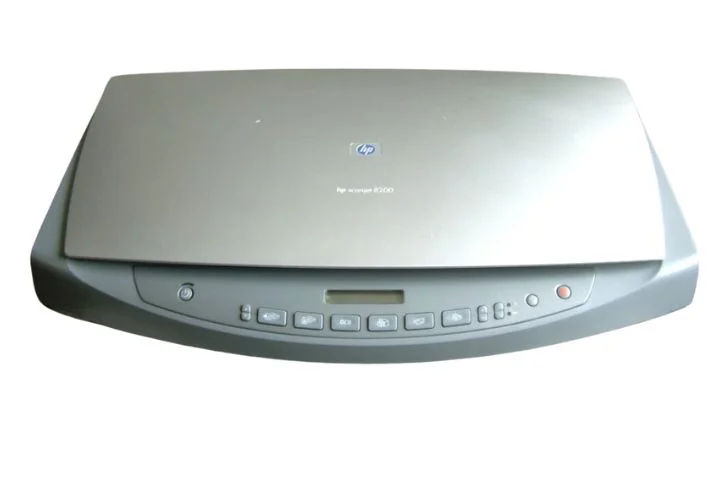
One of the first affordable flatbed scanners for home and office use, the HP ScanJet was known for its reliability and helped popularize the idea of digitizing documents.

This model was highly regarded for its high-resolution scanning capabilities, making it a favorite among photographers and graphic designers for digitizing photos and artwork.
Known for its ultra-slim design, this flatbed scanner was a popular choice for home users, combining sleek aesthetics with efficient functionality.
These iconic scanners were groundbreaking in their time, vitally making scanning technology accessible to a broader audience and setting the stage for modern solutions.
7. Retro Accessories for Vintage Tech
Vintage tech wouldn’t be complete without its accessories. These add-ons weren’t just extras; they were essential parts of the experience, enhancing the functionality and usability of classic gadgets.
Accessories played a crucial role in getting the most out of vintage technology. These items weren’t just for show—they were designed to improve the performance, protect the investment, and personalize the experience.
Here are some of the essential accessories that complement vintage gadgets:
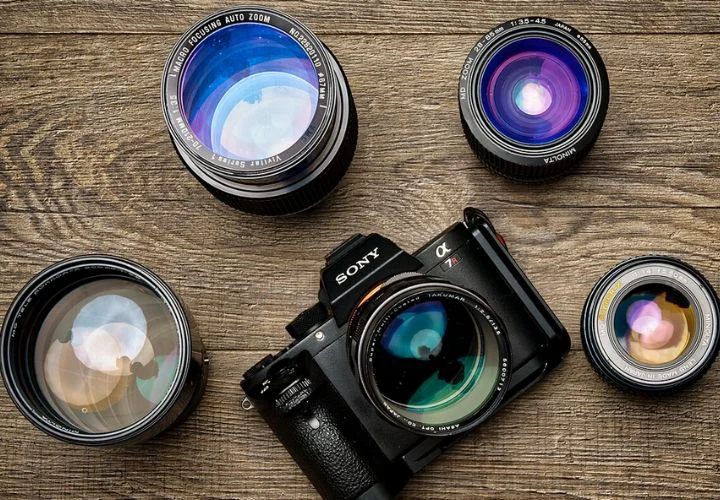
via Wikimedia Commons
Changing lenses enabled photographers to take a variety of shots, ranging from wide-angle landscapes to close-up portraits, significantly enhancing their cameras’ versatility.
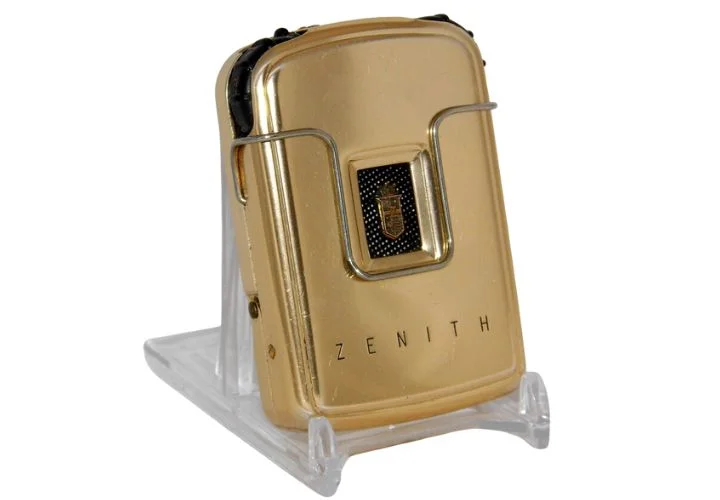
Even back then, protecting your phone was important. Early cases, often made of leather or hard plastic, kept those bulky cell phones safe from damage.

(via Wikimedia Commons)
Ribbons were essential for typewriters and early printers. They provided the ink needed to produce precise, readable text, and they had to be replaced regularly to maintain print quality.

Film cartridges were a must for cameras. They were the medium through which images were captured, and choosing the suitable film could make a big difference in the final photo.
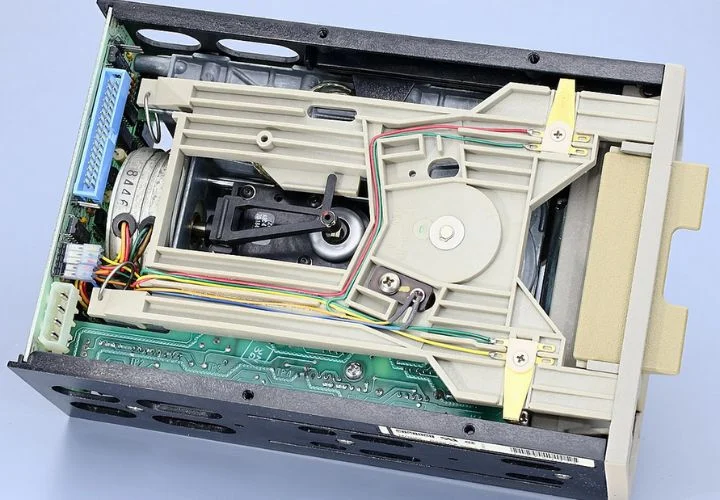
Floppy Disks were vital for storing and transferring data on early computers. Without these, saving work and sharing files would have been much more challenging.
Many portable devices, from cameras to early handheld gaming systems, relied on external battery packs to extend their life on the go.
6. Stylus Pens
For early PDAs (Personal Digital Assistants) and some gaming devices, a stylus pen was necessary for navigation and interaction with the device’s screen.
Here are some great places to source vintage tech items:
- Online Marketplaces
- Auctions
- Local and online auctions can be treasure troves for rare and collectible tech gadgets.
- Specialty Shops
- Visit shops specializing in antiques or vintage electronics for curated selections of classic devices.
- Flea Markets and Antique Fairs
- These venues often have hidden gems where you can find vintage tech items at bargain prices.
- Thrift Stores
- Don’t overlook thrift stores; they occasionally stock vintage electronics that have been donated.
- Collector Forums and Communities
- Engaging with online communities or forums dedicated to vintage tech can lead to private sales and trades.
The Legacy of Vintage Tech Gadgets
The enduring appeal of vintage tech lies not just in its functionality but in the stories and history each piece carries. These classic gadgets, with their retro designs and innovative mechanics, offer a tangible connection to the past, reminding us of a time when technology began shaping the world as we know it today.
Each vintage tech gadget is a testament to the creativity and problem-solving spirit that drove technological progress. While our devices will continue to evolve and become ever more sophisticated, there’s something timeless about vintage tech that will always capture our imagination.
If you found this helpful, share it with your friends!
Related Articles:
More Article on Tech



